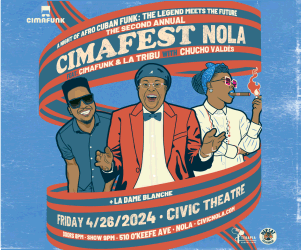 |
Ingrid Lucia came to New Orleans in 1985 aboard a raft as part of the Flying Neutrinos, a family band of self-taught musicians that started busking around the French Quarter. They made their way to town from Texas not on I-10 but across the Gulf of Mexico on a raft piloted by Poppa Neutrino, the subject of Alec Wilkinson’s book The Happiest Man in the World. Neutrino—born David Pearlman before dubbing himself Poppa Neutrino—is a gambler’s son who has spent his life shedding possessions and obligations in an attempt to be truly free.
The metaphor for Neutrino’s quixotic pursuit of freedom is sailing the ocean on homemade rafts, something he did successfully once and spends the last quarter of the book to do again. Wilkinson openly admires Neutrino for his dedication to freedom, but he isn’t blind to his faults. In fact, his handling of Neutrino is one of the book’s strengths. He presents him first as legend, then as a man in his 70s trying to convince the University of Arizona football coach that he has an unstoppable play—a passage that raises the possibility that he’s a crackpot and that the legend might be generous.
As he prepares for another raft voyage and Wilkinson joins the story in a more hands-on way, Neutrino becomes a more nuanced character. None of the previous depictions were wrong, but they weren’t quite right either. Wilkinson also lets readers see how a man with no visible means of support survived for over 70 years. In the end, it’s clear how he could drive people crazy, but its also clear why people were drawn to him anyway.




